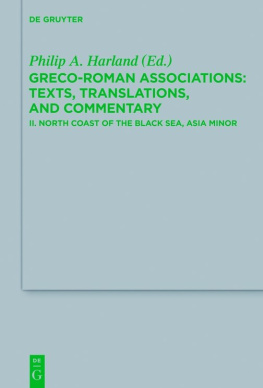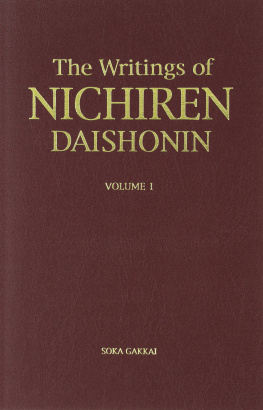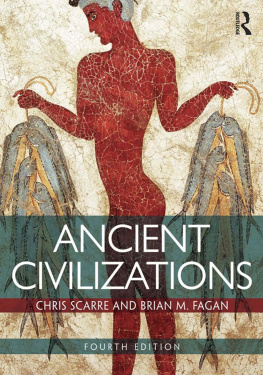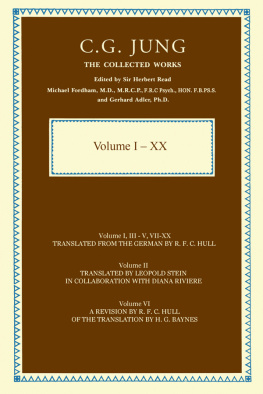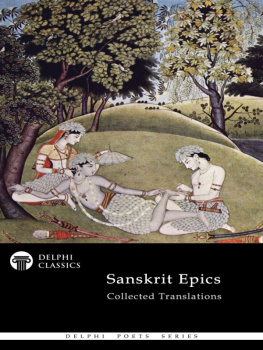Supposed origin of the Code of Manu.
THE Nrada-sm ri ti or Nradya Dharma s stra first attracted attention nearly a century ago by being quoted in the Preface to Sir W. Jones's celebrated translation of the Code of Manu. What caused it to be brought before the notice of the learned world, was its bearing on the origin and history of the authoritative law-book of ancient India. The statements extracted by Sir W. Jones from the opening chapter of Nrada's law-book require some modification at present, as he was not acquainted with the larger and more authentic of the two versions of Nrada's work, which is now translated. It appears from the present work (pp. 1-4) that Nrada, the reputed compiler of the Naradiya Dharm as stra, refers to four, instead of three, successive versions of the Code of Manu, in 100,000 s lokas or 1,080 chapters, in 12,000, 8,000, and 4,000 s lokas. The authorship of these four versions is assigned, respectively, to Manu, Nrada, Mrka nde ya, and Sumati, the son of Bh ri gu, and the Nrada-sm ri ti is described as an abridgment, made by Nrada, of the ninth or Vyavahra (legal) chapter of the original Code in 100,000 s lokas. The first part of Nrada's abridgment of the ninth chapter of Manu's Code is designed as a mt ri k or vyavahra-mt ri k, 'summary of proceedings-at-law' or 'general rules of procedure.'
Explanation of the legend.
Though the mythical nature of the Preface to the Nradasm ri ti is sufficiently apparent, some facts which recently have come to light impart a higher degree of probability to the alleged connexion between Manu and Nrada, than was formerly allowed by myself. Thus the contents of Nrada's Preface to his Sm ri ti appear to have been known to such an early author as Medhtithi, who quotes it, rather loosely it is true, in his Commentary on the Code of Manu, where he says that 'this work, consisting of one hundred thousand ( s lokas), was composed by I'ra g pati and abridged successively by Manu and the rest .
Manu anterior to Nrada.
Although, therefore, there appears to be an element of truth in Nrada s account of the history of the Code of Manu, and of his own Sm ri ti. there can be no doubt that the actual position of the two works has been inverted by him. The composition of Bhrtgu, or of Sumati, the son of Bh ri gu, i.e. the now extant Code of Manu, is not posterior, but decidedly anterior, in date to the Nrada-sm ri ti, as may be gathered easily from a comparison of both works. Thus e.g. Nrada mentions twenty-one modes of acquiring property, fifteen sorts of slaves, fourteen species of impotency, three kinds of women twice married, and four kinds of wanton women, twenty women whom a man must not approach, thirty-two divisions of the law of gift, eleven sorts of witnesses, five or seven ordeals, four or five losers of their suit, two kinds of proof and two kinds of documents, seven advantages resulting from a just decision, eight members of a lawsuit, one hundred and thirty-two divisions of the eighteen principal titles of law. The first germs of some of these theories may be traced to the Code of Manu, and it is interesting to note how these germs have been developed by Nrada. As a rule, his judicial theories show an infinitely advanced stage of development as compared to Manu's, and his treatment of the law of procedure, in particular, abounding as it does in technical terms and nice distinctions, and exhibiting a decided preference for documentary evidence and written records over oral testimony and verbal procedure, exhibits manifest signs of recent composition.
Nrada acquainted with the Code of Manu.
An analogous inference may be drawn from the fact that Nrada was apparently acquainted with a work either identical with, or closely allied to, the now extant Code of Manu. His analysis of the contents of the original Code composed by Manu in 100,000 s lokas corresponds in the main to the topics treated in that work as it now stands. He quotes the opening verse of the original gigantic work of Manu, and it is a remarkable coincidence that this verse agrees with Manu I, 5, 6, i.e. with the actual exordium of the Code of Manu, as vv. 1-4 serve as an introduction only, and may be a subsequent addition. Forensic law is alleged to have formed the subject of the ninth chapter of the original composition of Manu. In the Code of Manu, law and judicature are discussed in the eighth and ninth chapters. The twenty-four chapters, divided into one thousand and eighty, i. e. 45 x 24 sections, of the original Code, seem to represent double the twelve chapters of the Code of Manu. On the other hand, Sumati, the son of Bh ri gu, who is alleged to have reduced the original Code of Manu to its present size, and to have produced the law-book now current among mankind, may be identified with Bh ri gu, the supposed author of the actual Manu-sm ri ti; and the number of 4,000 s lokas, which is assigned to his composition, may be taken to be a rough statement of the actual extent of the Manu-sm ri ti, which in reality runs up to 2,685 s lokas only.
A consideration of these facts leaves but little doubt that the compiler of the Nrada-sm ri ti, whoever he was, must have been acquainted with a work closely akin to the now extant Manu-sm ri ti. This is so much the more probable because several of his references to the authoritative enunciations of Manu may be actually traced to the Manusm ri ti , and because a number of verses either occurring in the MSS. of the Nrada-sm ri ti, or attributed to him by the digest-writers, recur in the Code of Manu.
Discrepancies between Manu and Nrada.
However, though acquainted with the Code of Manu, the so-called Nrada was far from offering a mere slavish reproduction of its doctrines in his own work. On the contrary, the Nrada-sm ri ti must be considered as an independent, and therefore specially valuable, exposition of the whole system of civil and criminal law, as taught in the law schools of the period. It is in fact the only Sm ri ti, completely preserved in MSS., in which law, properly so-called, is treated by itself, without any reference to rules of penance, diet, and other religious subjects; and it throws a new and an important light on the political and social institutions of ancient India at the time of its composition. Several of the doctrines propounded by Nrada are decidedly opposed to, and cannot be viewed in the light of developments from, the teaching of Manu. Thus e.g. Nrada advocates the practice of Niyoga, or appointment of a widow to raise offspring to her deceased husband; he declares gambling to be a lawful amusement, when carried on in public gaming-houses; he allows the remarriage of widows; he virtually abrogates the right of primogeniture by declaring that even the youngest son may undertake the management of the family property, if specially qualified for the task; he ordains that, in a partition of the family property, the father may reserve two shares for himself, and that, in the case of a partition after his death, the mother shall divide equally with the sons, and an unmarried sister take the same share as a younger son; he lays down a different gradation of fines from those laid down by Manu, &C.





